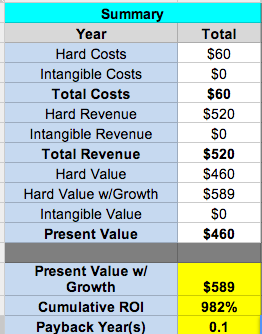Hold on to the edge of your seats, because if the title is any indication, this is sure to be a pretty exhilarating post! But to be honest, sometimes this is how the blog is gonna work.
Here’s the deal. My electric toothbrush died the other day, and I wanted to figure out if it was worth investing in a new one. It might not be the most earth-shattering, money-saving analysis in the history of civilization, but that’s life. One day you might get a post that has the potential to save you $30,000 over 10 years and the next day you might get one that only saves you a little over $600 (true story with manual toothbrushes by the way). As info, I have a lot of potentially high impact posts lined up, but I don’t want to front-load. Gotta spread it out to keep things interesting.

But here is my way of justifying these kinds of posts. One, we’re still dropping knowledge, even if it is a little inconsequential. And two, life is the summation of a bunch of small decisions. A little frugal cost optimization on the margins never hurt anyone. We’re not talking about rationing toilet paper or anything here.
So as I mentioned above, my trusty electric toothbrush died. I had it for about 5 years before it quit working on me, which is a pretty impressive lifespan for such a frequently used device. When I first got it, I felt pretty badass, like I was doing something really healthy and new-age for my teeth. It was the oral hygiene equivalent of switching from roller skates to roller-blades. But I began to resent the whole electric toothbrush thing a bit when I started having to buy replacement heads every few months.

It is a lot like high-end razor blades for dudes (not sure if it is like this for ladies too), but the initial equipment investment is pretty modest compared to the cartridge (or toothbrush head) replacement costs. I think there must have been some cross-pollination between the Gillette and Sonicare strategy departments if you catch my drift. But, back to the story, I had already sunk the cost on the toothbrush, so I felt like it would be less expensive just to keep using it (not so, actually).
So here I am, with severely stunted forearm muscles (lack of brushing exercise) and only a manual travel toothbrush, wondering if a) manual toothbrushes clean as well as electric toothbrushes, and b) if they can save you a little bit of money too. And while I’m not a health expert, I do think the google evidence and marketing information for electric (sonic?) toothbrushes sort of implies that they are healthier in a potentially significant way. However, I have my reservations about the studies and why they always say, “particularly for people with manual dexterity problems or health issues such as arthritis.” Color me 2/3’s convinced.
Regarding how much money a manual toothbrush would save you, here are my numbers:
- 10-Year NPV: $589
- 10-Year ROI: 982%
- 10-Year Payback: 0.1
So you are looking at about $600 over ten years, not really a monumental sum, and that includes growth. The straight dollar for dollar loss is closer to $460.
For me, it really depends on how much better you think your teeth get cleaned with an electric toothbrush. An average of $60 per year is a small price for a little extra health insurance, especially since poor brushing can be associated with shorter life expectancies and heart problems. However, that being said, as a back-to-the-basics and simple life kind of man, I certainly wouldn’t fault you if you leaned the other way.
Regardless of your own convictions, it appears that manual toothbrushes probably save a bit of money versus electric. But, considering how close the score is, it probably shouldn’t be a financial decision in the first place.
Assumptions
- $50 electric toothbrush every 5 years (Amazon)
- $60 every 1.5 years for 6 heads (Amazon)
- Versus $6 per year for manual toothbrushes (Amazon)
- Savings grow at an inflation-adjusted rate of 4% per year
